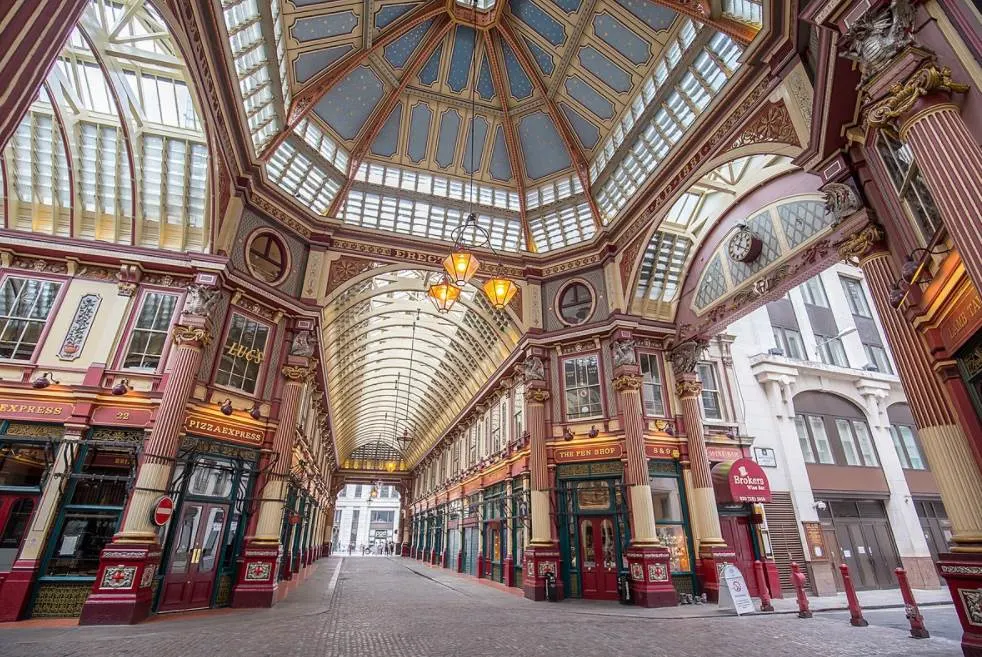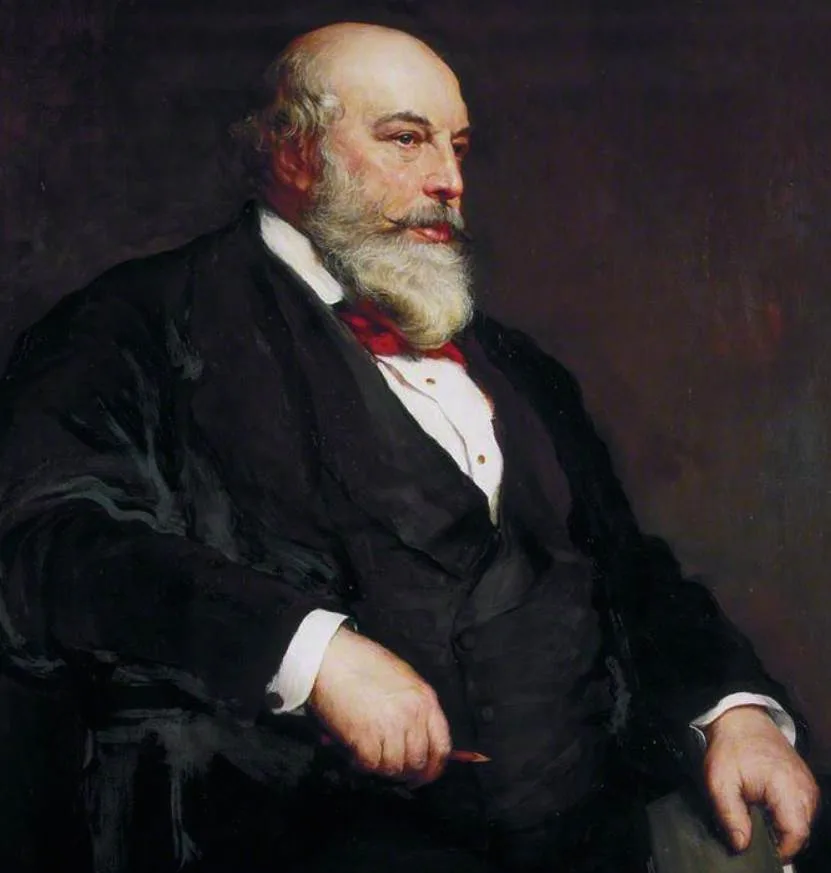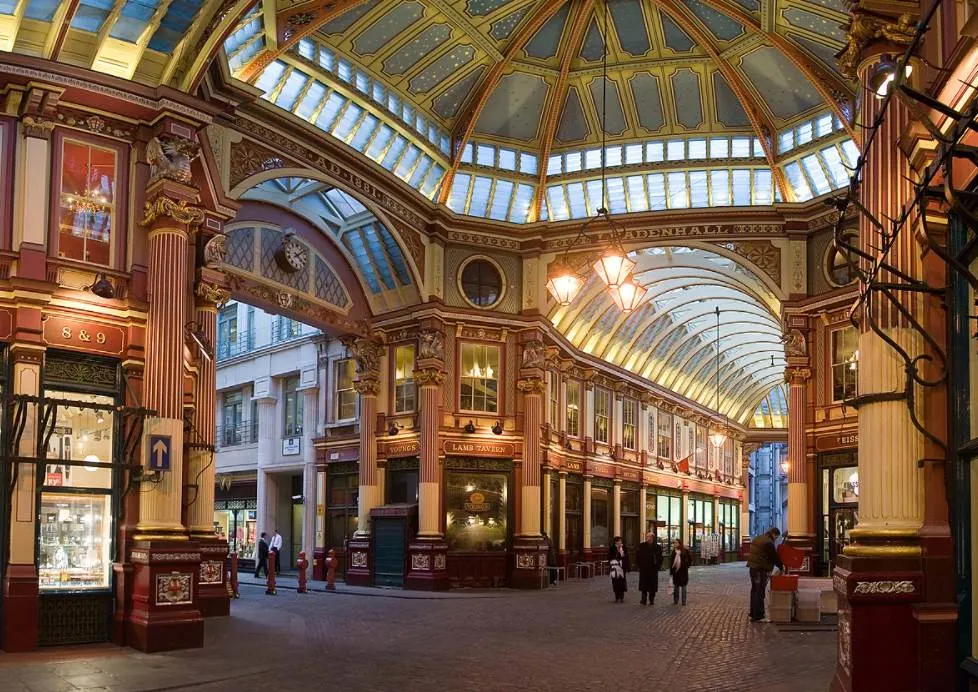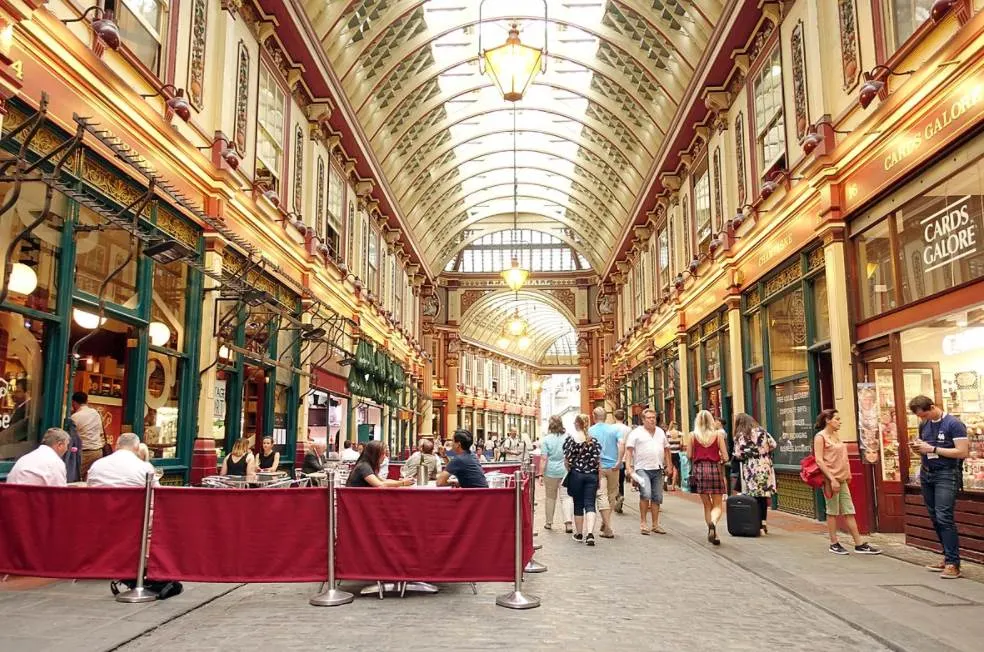One of the most popular markets in London is located in the center of the historical heart of the city.
Let’s take a closer look at some of the most interesting facts about Leadenhall Market, an interesting attraction in the city that you must put on your London bucket list.
1. It’s located in an important street in the City of London
The main entrance of Leadenhall Market is located on Gracechurch Street, one of the main streets in the heart of the central business district of London.
The remarkable historic structure is located just walking distance from towering skyscrapers and remarkable modern structures such as 30 St Mary Axe, better known as the “Gherkin.”
Other famous landmarks in the area are London Bridge, located a short distance south of the market, and the Tower of London, located just a bit further to the southeast.

2. This area was the center of Roman London
The Romans started their Conquest of Britain in the year 43 A.D. and arrived in the area that would become London shortly after. London Bridge was the first crossing of the River Thames and an important structure in the establishment of Londinium, Roman London.
The center of Londinium was located right where you can discover Leadenhall Market today. It featured a forum, similar to the Roman Forum in Rome, and a basilica, a multi-purpose building mostly used for administrative purposes.
The forum on this location was established around 70 A.D. and as one of the largest north of the Alps Mountains by the year 100 A.D. Yes, the Romans saw potential in their newly established province of Britania.

3. A market on this location was established in the 14th century
The first market in the middle of the ancient Roman forum was established long after the Romans had left Britain. This means that the market was built on the remains of this ancient forum and basilica.

Since it was the center of Roman Londinium, it surely already served its purpose as both a market and meeting place in the early Middle Ages and beyond. This is emphasized by the notion that Bishopsgate, Cheapside, and Leadenhall Street all follow the plan of the ancient Roman roads.
The first official mention of a market happened in the year 1321. This happened when people from outside of London, then referred to as “foreigners,” started selling poultry here, the prelude to a booming poultry and meat market.

4. Leadenhall Market became the City of London’s property in 1411
Meat and poultry were sold together with other products such as cheese and butter in the late 14th century. The growing popularity of the market led Lord Richard ‘Dick’ Whittington, the mayor of London at the time, to acquire the market’s building in 1408.
He subsequently donated the building to the city of London in 1411, and the city has been managing Leadenhall Market ever since.
5. The market resembled a fortified castle in the 15th century
Because of its central location, the market had always been one of the most popular markets in London, starting way back in the early Middle Ages.
The outdated market building was replaced by a stone structure that was completed between 1400 and 1449. This wasn’t an ordinary structure by any means because it had the layout of a rectangular quadrangle and was two stories tall.
The outer walls were fortified as well and featured the type of battalions you can see in some of the most famous castles in England, most probably a preparatory feature in case of food shortages in the city.

6. The current covered market structure was built in the late 19th century
You could buy pretty much everything available at Leadenhall Market by the early 17th century. The products sold here included poultry, grain, eggs, butter, cheese, wool, leather, and cutlery.
The market remained, however, the most important poultry and meat market in London during the Middle Ages and into modern times.
The structure we see today was built in the late 19th century to a design of Sir Horace Jones (1818-1887). Apart from designing multiple other markets in London such as Smithfield Market and Billingsgate Market, his most famous work was the design of the iconic Tower Bridge.
The structure was transformed from an “unruly mess of stalls and shops” to a “respectable arcade” in the year 1881 and cost £99,000 to complete.
One of the most interesting facts about Leadenhall Market is that the medieval design of the narrow streets was retained. This provides a similar experience to what the people living hundreds of years ago must have had while shopping at the market.

7. The market was completely renovated in the early 1990s
Even though the building that was completed in the 1880s was a serious upgrade of the original 15th-century fortified structure, it could use another upgrade in the late 20th century.
The main focus of the renovations between 1990 and 1991 were the architectural features and decorations, greatly improving the overall appearance of the structure.
This project transformed Leadenhall Market into a shopping arcade that can compete with the likes of the Galleria Vittorio Emanuele II in Milan and the Royal Gallery of Saint Hubert in Brussels, to name just a few.

8. It’s one of the most popular tourist attractions in London today
The historic nature of the market along with its amazing architectural design has resulted in it being listed as a Grade II listed building in 1972.
It has also been featured in multiple films, including “Harry Potter and the Philosopher’s Stone” (2001), “The Imaginarium of Doctor Parnassus” (2009), and “Hereafter” (2010).
Its central location in the financial district of London, the iconic cobblestones, and the wide variety of shopping and dining opportunities have turned it into one of the most popular tourist attractions in the city today!

